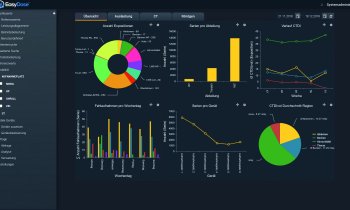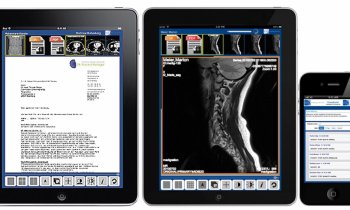Key trends in medical archive systems
At the EH symposium, Dr Algayres will discuss:

He was involved with the design of the Carestream VIParchive, Kodaks leading healthcare information management system, from its inception. Today this system is installed in over 200 healthcare centres worldwide.
There is a clear trend towards regionalisation of healthcare institutions. In search of better investment models, large networks of hospitals and diagnostic imaging centres are consolidating their IT networks. Government initiatives, such as the UK’s NpfIT, the USA’s RHIOs, or Canada’s Infoway, extend the scope of such consolidation to countries. Large projects, together with the adoption of heterogeneous PACS in multiple locations, are bringing new challenges for enterprise-wide image and data management systems: despite the heterogeneity of source systems and their geographical distribution, users expect that information will flow transparently through all locations and data distribution will be anywhere at anytime.
Simultaneously modern medicine is increasingly asking for fast, easy access to all data related to a patient. Specialty practices (cardiology, oncology, mammography, etc) require access to a global view of a patient’s record to properly assess the situation. Newly designed systems must be able to aggregate, at a user’s access point, various data comprised of both DICOM image data and non-DICOM objects (e.g. waveforms from electrocardiography; cine files, e.g. echocardiograms, etc).
Healthcare is experiencing an exponential growth of digital information, where storage and long term archiving will create unprecedented economic challenges. Regulatory requirements (e.g. HIPAA in the USA) impose stringent data protection and retention periods that exceed the lifetime of storage systems. However, not all data is evenly concerned by such constraints: evidently, orthopaedic and breast cancer screening images have very different lifecycle and retention periods. New archival systems include intelligent algorithms to secure and optimise storage usage, as well as long-term data preservation features to cope with media obsolescence.
New architectures are needed, to cope with massive amounts of data and increasing requirements for reliability. Grid-based archival technology is coming to healthcare. This allows archival features to be provided to any application on an ‘as-needed’ basis. A grid is incrementally built from entry-level hardware and provides high reliability by constantly adapting to a changing environment.
The first PACS generations are clearly no longer adapted to these trends. They have generated infrastructures composed of ‘information islands’, where not only the storage is dedicated to each subsystem but also information access is restricted. New paradigms of information management systems are emerging that support the interconnection of multiple medical sources (Modalities, PACS, EPRs) across territories, allow the aggregation of data and related indexes for better access, and intelligently manage their lifecycle.
The presentation at the symposium will describe projects that exemplify those trends and will explore some of the key functions provided by new generation medical archive systems.
08.03.2007











